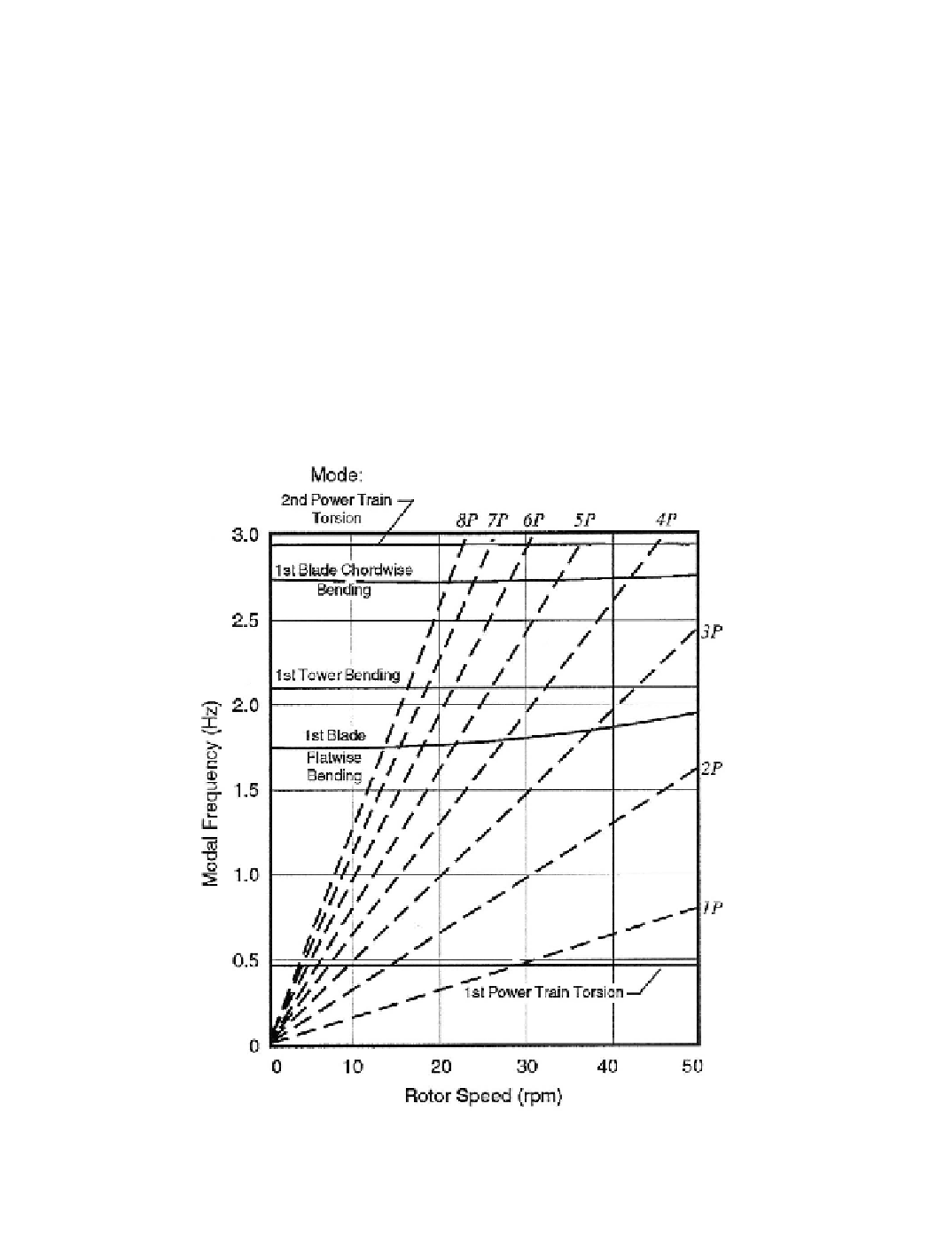Environmental Engineering Reference
In-Depth Information
Natural Vibration Modes in a Wind Turbine
Dynamic effects can be substantial in a wind turbine system because of the periodic
nature of its aerodynamic loading. As a result, the design process must depend on accurate
predictive tools and/or measurement techniques for determining the dynamic response
characteristics of the rotating structure. An elastic structure responds to periodic
forcing
functions
by vibrating in one or more discrete geometric patterns called
mode shapes
,
each
of which has a companion rate of vibration called a
modal frequency.
Mode shapes and
frequencies are determined primarily by the distributions of mass and stiffness throughout
the structure and by its
boundary conditions.
Rotation can alter the natural frequencies of
certain mode shapes, when centrifugal and Coriolis forces change stiffnesses. Because
mode shapes and frequencies are relatively independent of applied loadings, they are often
referred to as
natural
or
free-vibration modes.
Both analytical and experimental procedures
for determining mode shapes and frequencies are referred to as
modal analysis.
Figure 11-6 shows the results of a typical modal analysis of a HAWT [Sullivan 1981],
displayed in a frequency plot called a
Campbell diagram.
Natural frequencies are plotted
vs.
rotational speed, with one generally-horizontal line per mode. Rays from the origin are
plots of integer multiples of the rotational frequency. In a rotating structure, excitation
loadings normally occur at these integer-multiple frequencies, often abbreviated 1
P
,
2
P
,
etc.
Figure 11-6. Typical Campbell diagram displaying the results of a HAWT modal
analysis.
Radial lines indicate the frequencies of potential excitation forces [Sullivan 1981]

Search WWH ::

Custom Search